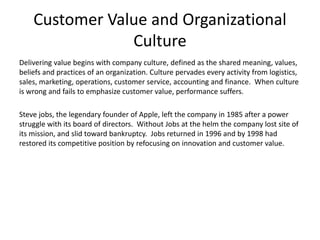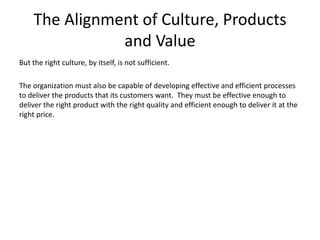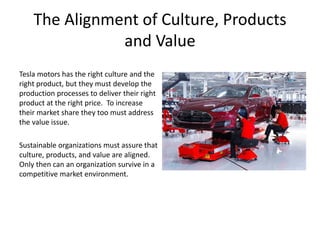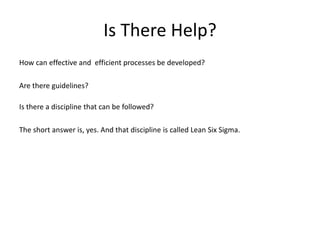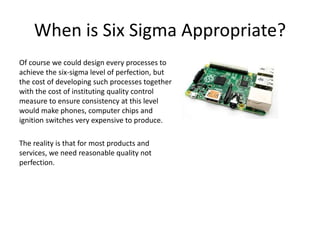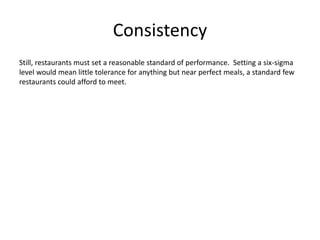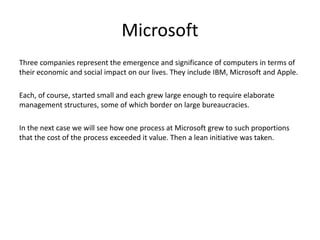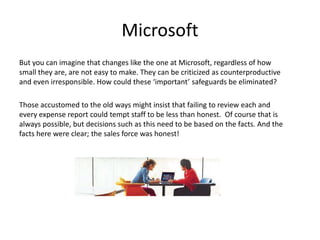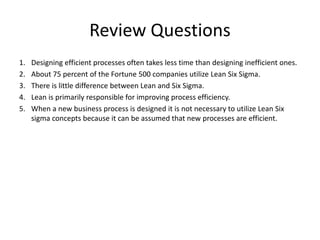The document discusses Lean Six Sigma as a discipline that improves operational efficiency and quality by focusing on customer value, utilization of effective processes, and minimizing waste. It details the significance of aligning organizational culture with customer needs and the distinct roles of Lean and Six Sigma in achieving overall business effectiveness. Various examples, including Microsoft and successful organizations like Tesla and the New York Ballet, illustrate how implementing these principles can lead to improved performance and customer satisfaction.






